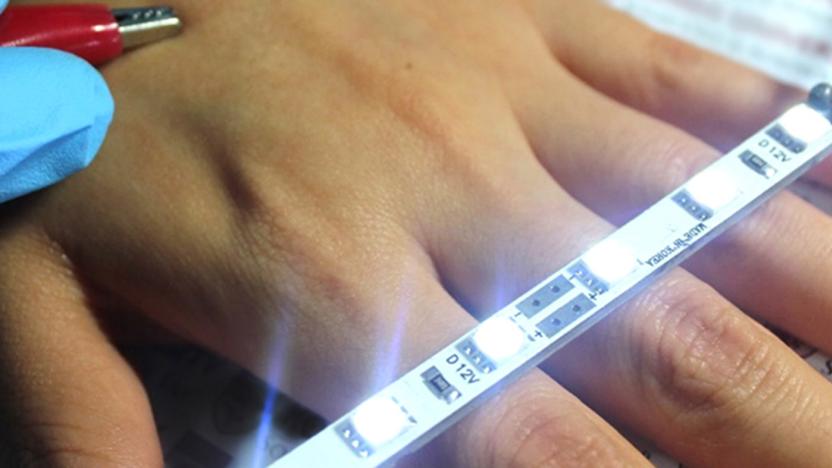koreauniversity
Latest

Researchers want to power pacemakers with cotton-based biofuel cell
Researchers at the Georgia Tech and Korea University believe they have found a way to power implantable medical devices like pacemakers with a new fuel cell made from cotton fiber. The glucose-powered biofuel cell could provide twice as much power as conventional options.

Nanofiber film could lead to electronic skin
If you want electronic skin or other transparent wearable devices, you need to send a current through that skin. However, it's hard to make something that's both conductive and transparent -- and that's where a team of American and Korean researchers might save they day. They've developed a nanofiber film that's 92 percent transparent, but has electrical resistance that's "at least" 10 times better than the previous best. You create it by electrospinning polyacrylonitrile (a polymer resin) until it forms a mat, spatter-coat it with metal and then electroplate it. The result is a material that eases the flow of current but is mostly made up of see-through holes.

ICYMI: Thought-controlled exoskeleton, textingbrella & more
#fivemin-widget-blogsmith-image-947132{display:none;} .cke_show_borders #fivemin-widget-blogsmith-image-947132, #postcontentcontainer #fivemin-widget-blogsmith-image-947132{width:570px;display:block;} Today on In Case You Missed It: Thought-controlled exoskeletons are walking around a lab in Korea and we remain impressed. An advertisement for a redesigned handle on an umbrella is making us all shout #firstworldproblems. And this may have happened back during MakerFaire, but it's news to us: A 15-year-old beat out everyone else at a "Game of Drones" competition that pits drones against one another, Fight Club style.

Lower-limb exoskeleton is controlled by looking at flashing lights
Just like DARPA and many other institutions, Korea University and TU Berlin researchers are working on an interface that gives users the power to control an exoskeleton with their minds. The system uses an electroencephalogram (EEG) cap to read signals from the user's brain, but it also needs visual cues to work. For their tests, specifically, the scientists installed a panel with five LED lights on their lower-limb exoskeleton. Those LEDs are arranged as a cross, and each one has a different meaning. For instance, if the left light blinks, it's a command to walk towards that direction. The user has to see that light flashing, so when the EEG cap reads his brain to know what he's looking at, the exoskeleton will actually move left. This video from Korean University shows the process in detail.



